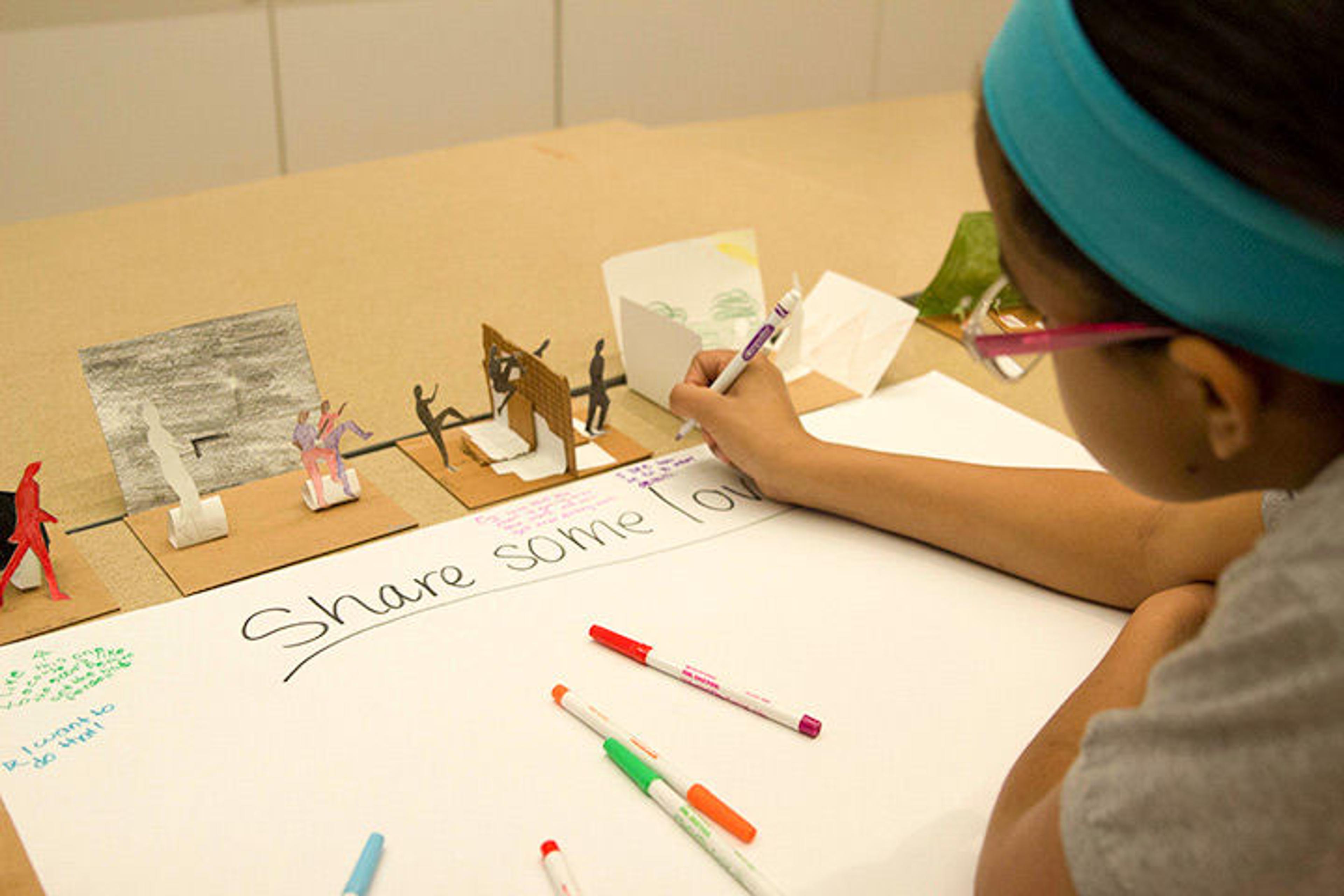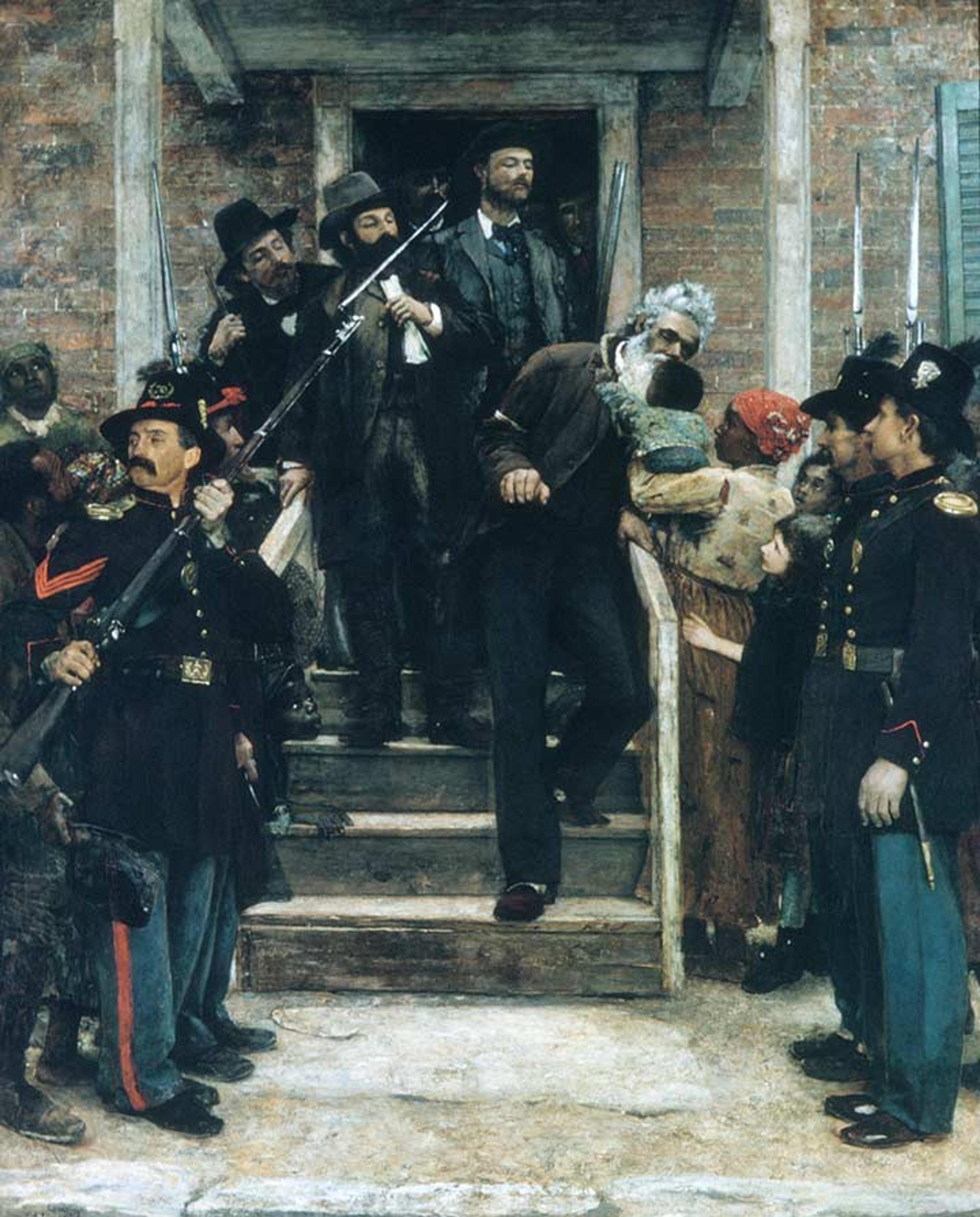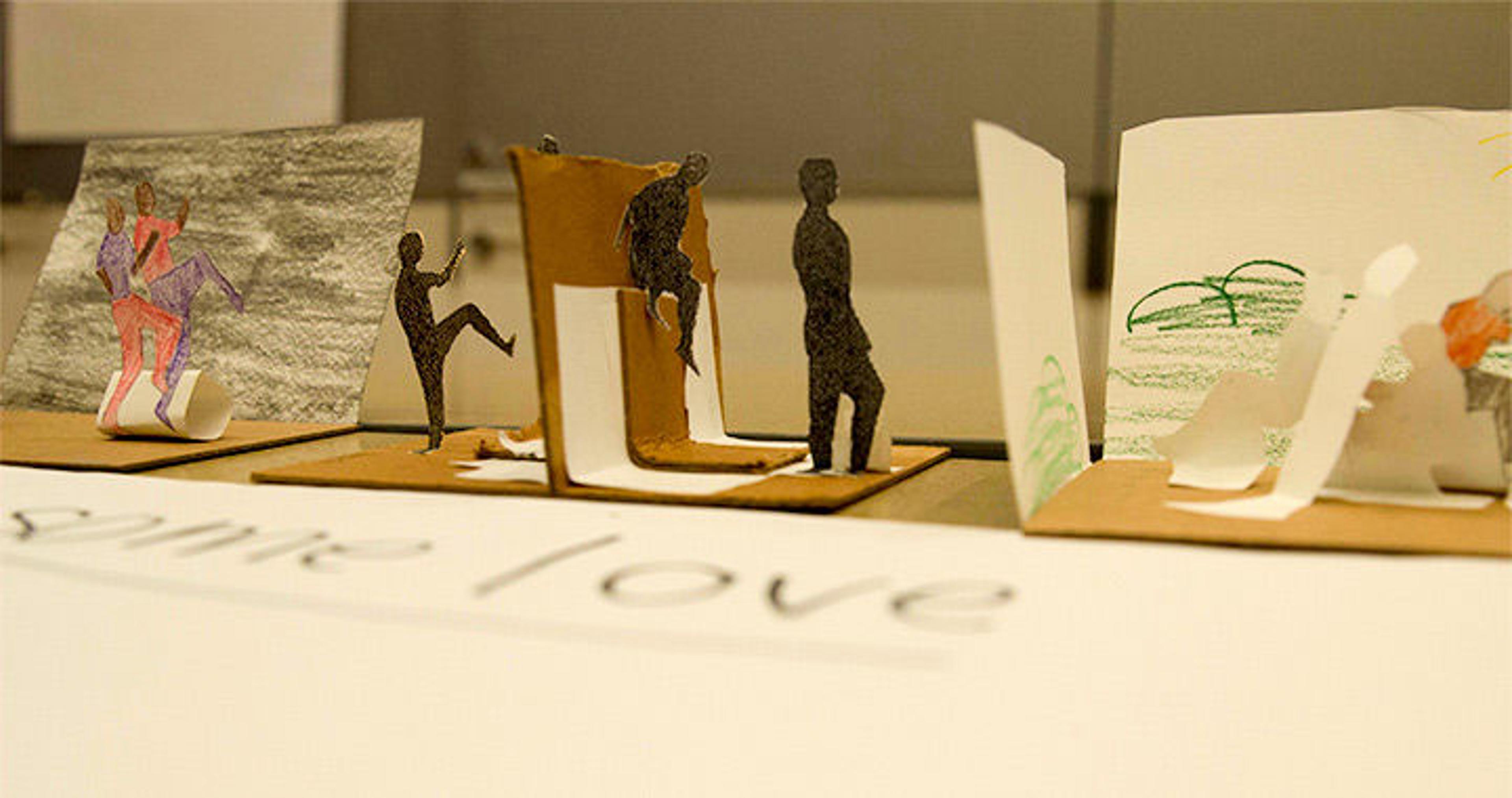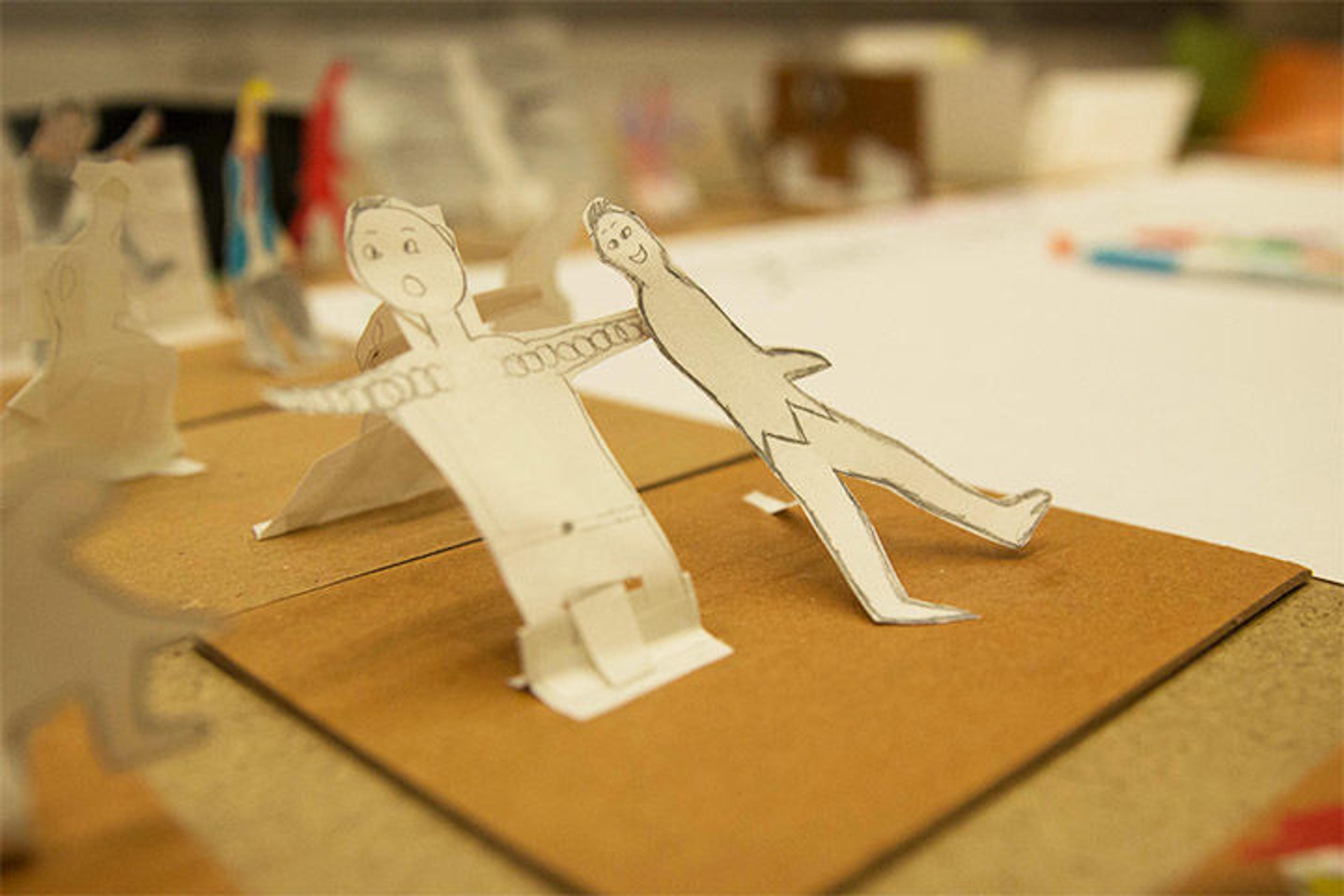Art, Liberty, and the Pursuit of Creativity

A student from JHS 151 in the Bronx at work at The Met. Photo by Skyla Choi
«What do you think of when you hear the phrase "struggle for liberty"? A group of students from JHS 151 in the Bronx looked at paintings at The Met that tell stories about Americans who struggled for liberty, or the ability to be free in your life, behavior, and political choices. Inspired by Thomas Hovenden's The Last Moments of John Brown and Emanuel Leutze's Washington Crossing the Delaware, each student created a 3D artwork to tell a story about what they see as a struggle for liberty.»
In The Last Moments of John Brown, John Brown—a controversial abolitionist who fought to free slaves—is pictured kissing a baby just before he was put to death. He was captured in 1859, after he led led an attack on a federal arsenal, or building where the government stores weapons. He wanted to give the weapons to slaves so they could use them to fight for freedom. The American Civil War began less than two years later.

Thomas Hovenden (American, 1840–1895). The Last Moments of John Brown, 1882–84. Oil on canvas, 77 7/8 x 66 1/4 in. (196.5 x 168.3 cm). The Metropolitan Museum of Art, New York, Gift of Mr. and Mrs. Carl Stoeckel, 1897 (97.5)
In Washington Crossing the Delaware, George Washington is pictured crossing the Delaware River with soldiers from the Continental Army. On Christmas Day in 1776, they won a victory over German troops who were helping the British fight the American colonists in Trenton, New Jersey. When looking at the painting, the class focused on how cold the scene looks. Students were shocked and said things like "Those are some big chunks of ice!" and "You would have to believe in your mission to row a boat for someone in such cold weather—and without gloves!"

Emanuel Leutze (American, 1816–1868). Washington Crossing the Delaware, 1851. Oil on canvas, 149 x 255 in. (378.5 x 647.7 cm). The Metropolitan Museum of Art, New York, Gift of John Stewart Kennedy, 1897 (97.34)
What do the figures' postures in both paintings tell us about what's happening in each story? Do certain people seem very important? How do you know? How does each painting make you feel? The students wished they could step into each painting and ask the characters about their struggles and emotions. They agreed that placing a figure at the center of a composition "makes it seem like that person is the most important" to the story.
After studying the paintings, the students thought deeply about how each one shows a "struggle for liberty" and the ways in which liberty has been defended throughout American history. Met instructor Taryn Matusik asked them to consider what it means to struggle for liberty in America today. Then, each student made a 3D narrative, or story told through sculpture, to describe a struggle for liberty that they've seen in the news, on social media, or in their own lives. They thought about how to tell these stories without words. One student commented that putting the scene together felt like "directing a movie."

A 3D narrative shows a figure climbing a wall. Photo by Skyla Choi
You can make your own 3D narrative using whatever materials you like. The students from JHS 151 used cardboard, paper, colored pencils, and glue. To get started, choose your characters and decide what they are doing. Are some characters more important to the story than others? How do you want people to feel when they look at the scene you create? These choices will help you decide where to place certain figures and what colors to use.

A 3D narrative of a figure breaking a chain. Photo by Skyla Choi
In the students' 3D narratives, shackles were broken, boundaries were crossed, and walls were climbed. What struggles for liberty will you choose to show? We want to know! Send a picture of your artwork to metkids@metmuseum.org.
Megan Kuensting
Megan Kuensting is the program coordinator for School and Educator Programs in the Education Department.